Persian rug cleaning
Persian rug cleaning, Persian rug laundry, Persian rug cleaning, Persian rug washing provides services to clients in the areas of rug renovation and repair, deep rug cleaning, rug revitalization, rug extraction cleaning, wet rug cleaning, wet rug cleaning, foam rug cleaning, antibacterial rug cleaning, rug disinfection, rug impregnation to your specifications in superior quality according to our internal company standards, IICRC™ guidelines and norms, and expertly implemented PERSIAN® system.
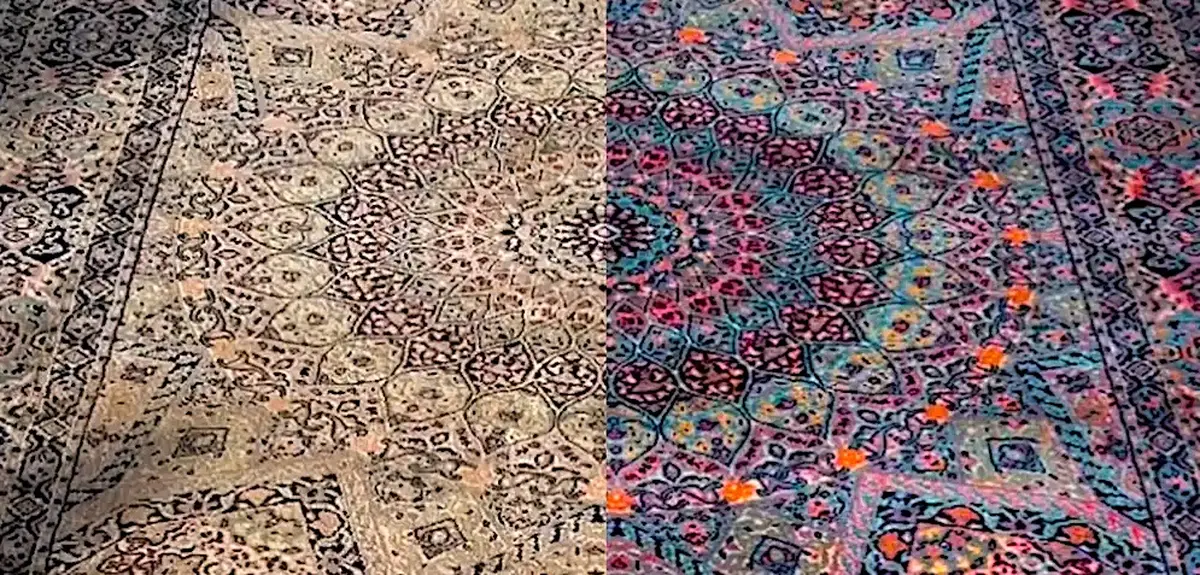
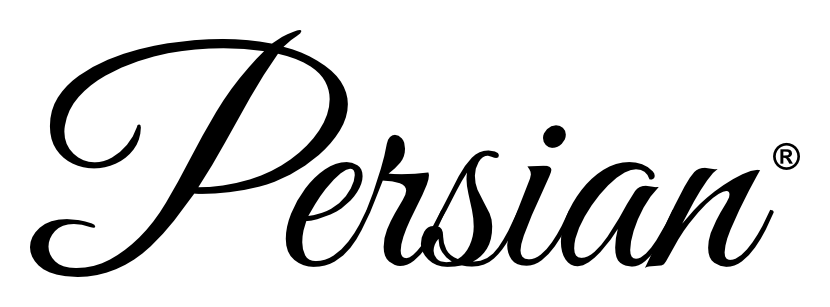 the PERSIAN® trademark defines the Rug Service® branded technology concept of a professionally qualified implementation company dedicated to the regular maintenance, cleaning, revitalization and impregnation of synthetic, Persian, Persian and silk rugs, textile and leather sofas, chairs and upholstered materials. This branded concept brings the utmost professionalism in full synergy with maintaining ethical, environmental and quality performance standards including contractual guarantee of services provided by the contractor.
the PERSIAN® trademark defines the Rug Service® branded technology concept of a professionally qualified implementation company dedicated to the regular maintenance, cleaning, revitalization and impregnation of synthetic, Persian, Persian and silk rugs, textile and leather sofas, chairs and upholstered materials. This branded concept brings the utmost professionalism in full synergy with maintaining ethical, environmental and quality performance standards including contractual guarantee of services provided by the contractor.
Paper rug Cleaning delivers the perfect solution for the longevity and beauty of your rugs. Rugs are an important element of any interior. They bring warmth, style and comfort to a space. However, their maintenance can be challenging and even regular vacuuming is often not enough to keep rugs in perfect condition. Over time, dust, allergens, dirt and various stains settle into the fibres of rugs. The solution is to use the professional services offered by a Persian rug cleaning company.
Persian rugs are produced in many countries of the Orient, in our country the most famous rugs are probably Persian, Turkish (Anatolian), Caucasian, Armenian, Central Asian (Turkmen), while the less known ones include Indian, Chinese, Nepalese or North African. Each group is characterised by distinctive combinations of colours, compositions and motifs, differences in the method of production and the type of material used.
 Quality Oriental rugs are most often made from hand-spun sheep’s wool, more rarely from goat or camel wool. For greater strength and durability, cotton fibre is also increasingly used for the warp, and the pile is usually wool, sometimes cotton. More luxurious rugs may be all-silk or with silk pile on a cotton warp. At first glance, they are characterised by their high sheen. Exceptionally, metallic fibres are used – silver or gold.
Quality Oriental rugs are most often made from hand-spun sheep’s wool, more rarely from goat or camel wool. For greater strength and durability, cotton fibre is also increasingly used for the warp, and the pile is usually wool, sometimes cotton. More luxurious rugs may be all-silk or with silk pile on a cotton warp. At first glance, they are characterised by their high sheen. Exceptionally, metallic fibres are used – silver or gold.
Knotted rugs (with pile) are divided according to the type of knot. Basically, all rugs are knotted with either a symmetrical (Turkish, ghiordes) knot or an asymmetrical irregular (Persian, senneh) knot. These are not knots in the true sense of the word, but only loops that are stretched around two, rarely three or four warp threads.
The two main types of nodes are easy to distinguish. Fold the rug lengthwise across the width, i.e. in the direction of the weft. In a symmetrical (Turkish) knot, the wool is wrapped around the two adjacent warp threads and the ends of the knot pass between them. In an asymmetrical (Persian) knot, the loop is twisted around one warp thread and the other half is twisted around the next warp thread, so the second warp thread lies between the two ends of the knot. As a result, when looking into the pile of a symmetrical (Turkish) weave, the warp is not visible, whereas in the case of an asymmetrical (Persian) weave, one of the two warp threads can be seen.
To distinguish the type of knot in very well knotted rugs, we need a magnifying glass. The difference between Turkish and Persian weave does not indicate any difference in the quality of the rug. In a very well knotted rug, the asymmetrical Persian knot allows slightly more versatility for more complex motifs, to create softer lines.
The density of knots (finish) per 1 dm² is determined by the thickness of the material used, which means that silk rugs are much finer than wool rugs. In fact, finely knotted rugs command a higher price than coarsely knotted rugs. This is because the cost of the material is higher and it takes longer to make. Still, it is not a rule that a rug with a higher density of knots must be better and more expensive. The quality and price of rugs is influenced by many other factors – the age of the rug, its uniqueness, the quality of the weaving, the workmanship of the material and colour and last but not least the place of origin, originality and pattern.
The delivery is best determined on the reverse side of the rug. We always count 10 cm of horizontal and 10 cm of vertical knots, then multiply these numbers. The best result is obtained by calculating the diameter from several different parts of the rug. When counting knots in the horizontal direction (after the weft) it is important to remember that each knot passes through 2 warp threads.
Representative rug quality by number of knots per 1 dm²:
- Up to 500 knots – very coarse
- 500 – 1000 knots – coarse
- 1000 – 2000 knots – medium fine
- 2000 – 2500 knots – fine
- 2500 – 4500 knots – very fine
- above 4500 knots – extremely fine
Persian rug cleaning & input
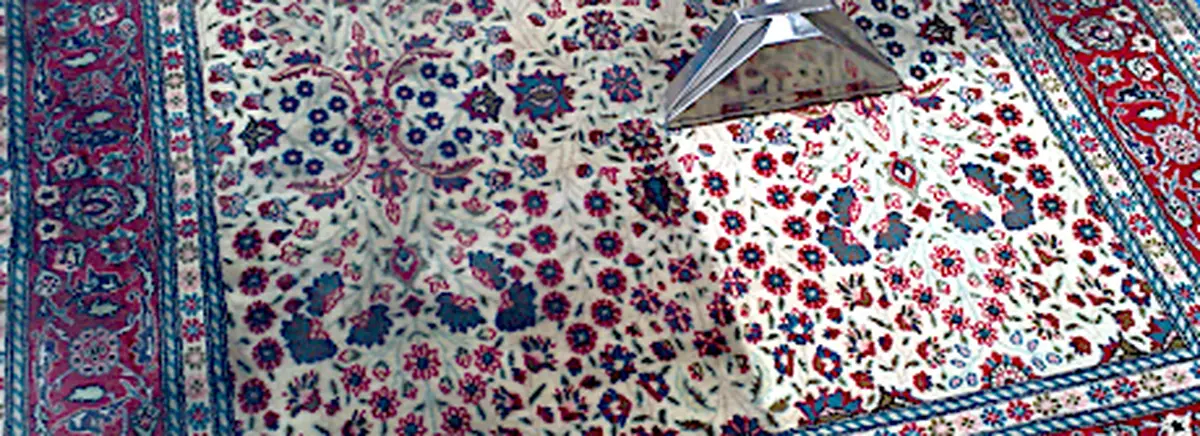 We know why it’s important to have your Persian rugs professionally cleaned by a rug cleaning company. Normal home rug care mainly involves vacuuming and occasional hand cleaning. However, these methods are not enough to thoroughly remove all the dirt and allergens that settle deep in the rug fibers. A professional Persian rug cleaner can clean your rugs so that they look like new, while extending their life and performing a deep disinfection with UV irradiation and the “BIO-OZON” ozone vacuum machine, all without the need for chemicals.
We know why it’s important to have your Persian rugs professionally cleaned by a rug cleaning company. Normal home rug care mainly involves vacuuming and occasional hand cleaning. However, these methods are not enough to thoroughly remove all the dirt and allergens that settle deep in the rug fibers. A professional Persian rug cleaner can clean your rugs so that they look like new, while extending their life and performing a deep disinfection with UV irradiation and the “BIO-OZON” ozone vacuum machine, all without the need for chemicals.
Deep removal of dirt and allergens by UV radiation and ozonation
Dust, dust mites and other allergens can hide deep in the rug and cause health problems, especially allergies and asthma. Conventional vacuuming only removes surface dirt but does not reach deep into the fibres. Persian rug cleaning uses special technologies that penetrate deep into the rug and remove even the smallest particles of dust, dirt and allergens. This improves the air quality in your home.
Removing stubborn stains and unpleasant odours with ozone
Rugs can easily suck up liquids and odors that build up over time and cause unpleasant smells. Professional cleaners use strong but gentle cleaning agents that will remove even stubborn stains from wine, coffee or pets without damaging the material. Stains that you don’t remove at home can penetrate deeper into the fibers over time, which can cause permanent damage to the rug.
Extend the life of your rug with impregnation and lanolin
Persian rugs are often an expensive investment, whether it’s a hand-woven piece rug or a modern designer piece. Regular professional cleaning extends the life of a rug by preventing the build-up of dirt that can damage its fibres. A Persian rug cleaning company will take care of your rug with care to make it last as long as possible.
Persian rug cleaner and technical information
 Persian rugs are made from different types of fibers that have specific properties and require different cleaning methods. Our Persian rug cleaning company is experienced in cleaning all common types of Persian rugs.
Persian rugs are made from different types of fibers that have specific properties and require different cleaning methods. Our Persian rug cleaning company is experienced in cleaning all common types of Persian rugs.
Overview of Persian rug cleaning services
Before starting the cleaning procedure, rug repair or restoration of rugs and fringes is provided if necessary. If your rug has suffered damage, for example due to wear, tear or loss of colour, Persian rug cleaning can offer repair and restoration services. Experienced professionals can repair damaged fibers, re-dye faded areas, or restore the rug’s texture. These services are especially valuable for expensive or antique rugs that have a high value.
Phase 1 > mechanical brushing and knocking with the KIRBY® & HYLA® machine system. Tapping with a fine rotary brush loosens coarse mechanical dirt trampled deep into the rug fibre. The rug is ready for the next knocking process with the electric knocker, which aims to open and fluff the rug fibre. The whole process serves to loosen dust, hair, dried mud and dirt in the warp.
Phase 2 > chemical gentle cleaning – enzymatic/foam pre-spraying releases water soluble or dry foam soils. Enzymes will also remove contaminants that subsequent steps may not always release including removing grease and grime and releasing encapsulated odors.
Stage 3 > manual or machine cleaning combined with bath and soak of the rug. This is always determined by the type of rug and the soiling of the rug, so as to avoid deterioration and achieve the maximum possible cleaning result. Persian rug cleaning offers a special cleaning method that will revive the colors and bring back your rug to its original beauty. This service is ideal for rugs that are located in areas with direct sunlight or are exposed to frequent use.
Phase 4 > for Persian rugs, a nourishing application of natural lanolin is used to restore the natural properties of the Persian fibre and fabric. Lanolin regeneration brings revival to the Persian fibre and also brings protection to the rug from adverse external influences. The rug will show no signs of fraying, will not break, will gain a brighter color and will feel soft and nourished to the touch.
The 5th stage > of rug drying is quite crucial. Although the final disinfection and antibacterial treatment with ozone (O₃) is the most effective possible, as (O₃) is a powerful oxidant that effectively kills bacteria, viruses, moulds and odours and is therefore used by our company for the final disinfection of surfaces and textiles, thorough drying is important. This is because moisture can affect the effectiveness of the final antibacterial treatment and the disinfecting efficacy of both chemical and ozonation.
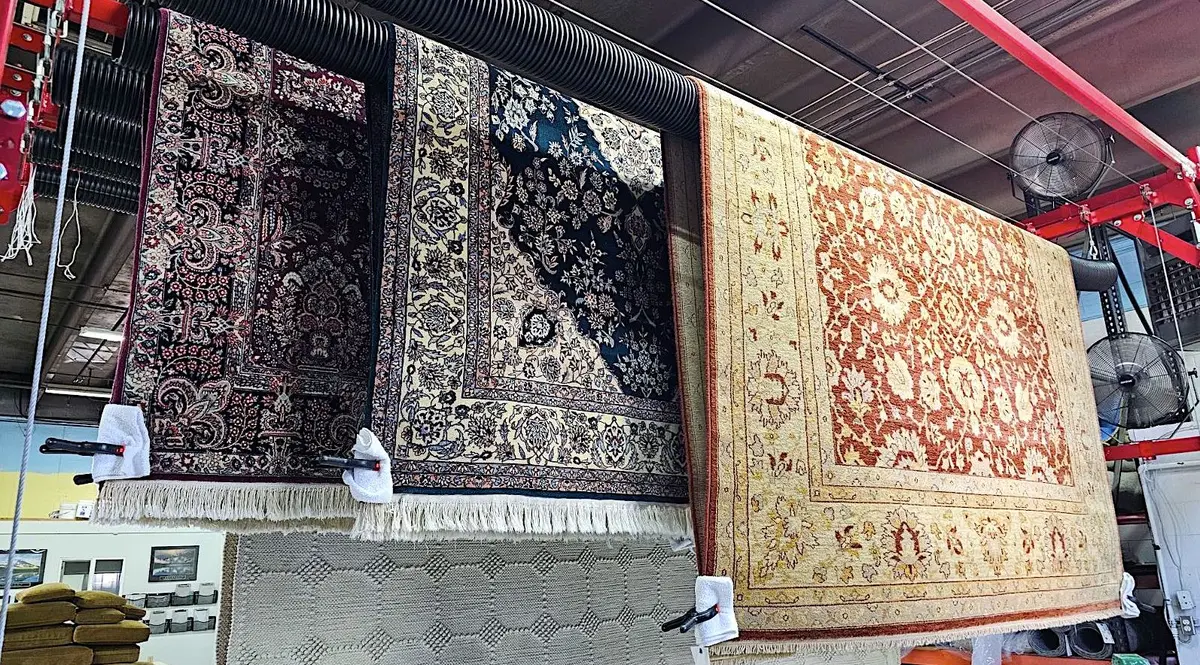 Residual moisture can still linger in materials after chemical or ozone disinfection, which continues to promote mold growth and possible bacterial proliferation. Therefore, at our dry cleaners, we consider it important to thoroughly re-dry materials after ozonation or chemical disinfection to prevent the re-growth of microorganisms.
Residual moisture can still linger in materials after chemical or ozone disinfection, which continues to promote mold growth and possible bacterial proliferation. Therefore, at our dry cleaners, we consider it important to thoroughly re-dry materials after ozonation or chemical disinfection to prevent the re-growth of microorganisms.
 Drying your rugs and getting them thoroughly dry is the absolute key in terms of expertly executed Persian or Persian rug maintenance. Our company uses a technological system of accumulated / radiant heat with the AeroFlow® system from Thermotec AG. Contact drying with uniform drying of rugs relies on AeroFlow® technology, which efficiently transfers heat to the fabric and fibres via integrated fireclay heating plates that distribute the accumulated heat deep into the surface of the material for the required time via the built-in thermostat with FlexiSmart temperature and humidity sensor.
Drying your rugs and getting them thoroughly dry is the absolute key in terms of expertly executed Persian or Persian rug maintenance. Our company uses a technological system of accumulated / radiant heat with the AeroFlow® system from Thermotec AG. Contact drying with uniform drying of rugs relies on AeroFlow® technology, which efficiently transfers heat to the fabric and fibres via integrated fireclay heating plates that distribute the accumulated heat deep into the surface of the material for the required time via the built-in thermostat with FlexiSmart temperature and humidity sensor.
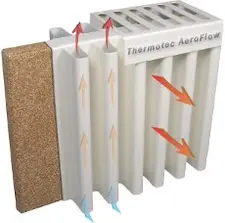 Drying rugs with the AeroFlow® system is therefore based on the proportional flow and radiation of heat to ensure fast and even drying of the rug. Thanks to the lower airflow velocity and low surface temperature of the heating plate, dust is not blown away and the rugs dry evenly. The independent VDE institute has verified that only quality materials meeting the certification criteria are used for the product “Thermotec storage heaters” and awards the products the VDE GS label.
Drying rugs with the AeroFlow® system is therefore based on the proportional flow and radiation of heat to ensure fast and even drying of the rug. Thanks to the lower airflow velocity and low surface temperature of the heating plate, dust is not blown away and the rugs dry evenly. The independent VDE institute has verified that only quality materials meeting the certification criteria are used for the product “Thermotec storage heaters” and awards the products the VDE GS label.
Phase 6> disinfection and odour removal, as rugs can absorb odours over time, especially when exposed to moisture, pets or spilled liquids. Professional cleaners offer disinfection and odor neutralization services that will remove even the most stubborn odors and leave your rug fresh and smelling good. The antibacterial treatment is done by deep disinfection with UV irradiation and ozone vacuum machine “BIO-OZON”, all without the need for chemicals with the highest possible efficiency in terms of removing mites, viruses, bacteria, odors and mold.
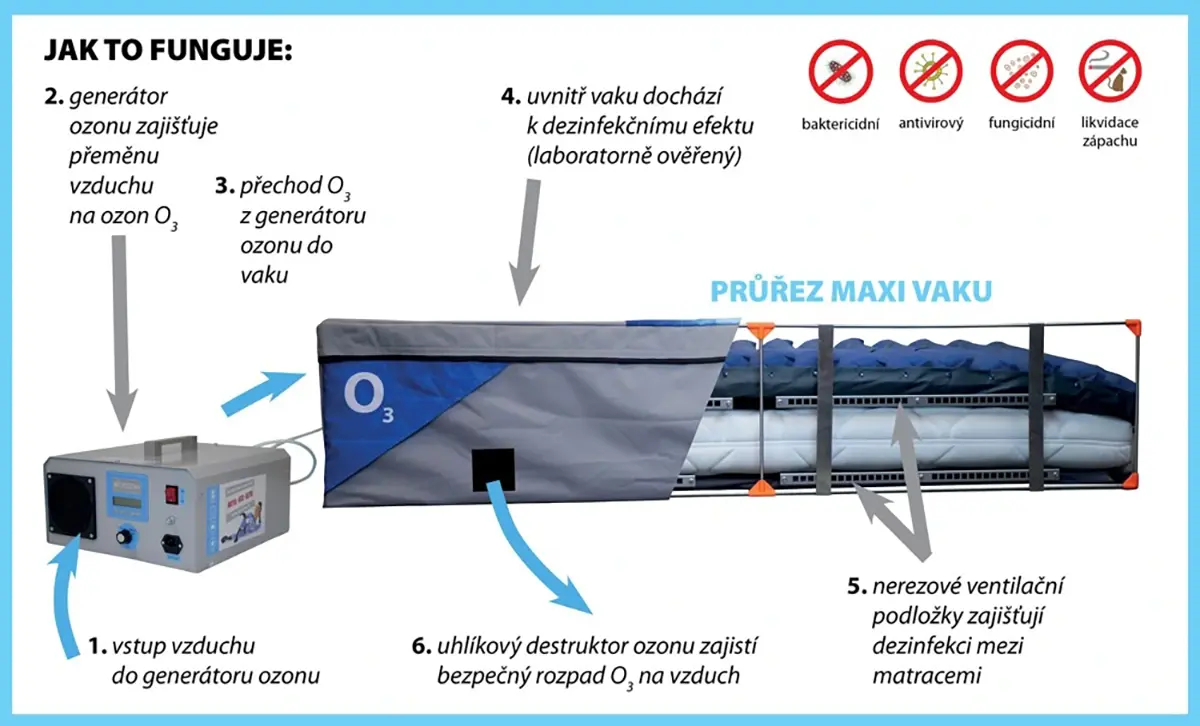
7th stage> application of protective impregnation including deodorization of the fibre after disinfection with ozone and UV. After cleaning – drying – disinfection, application of a special protective agent that repels dirt and stains from the British company PROCHEM® is recommended. These agents form an invisible protective layer that prevents liquids from penetrating the rug fibres. This will make your rug better able to resist soiling and easier to maintain.
How often should you use the services of a Persian rug cleaner?
The frequency of professional rug cleaning depends on several factors, including the type of rug, its level of use, and its location. In general, it is recommended to have your rugs professionally cleaned at least once a year. In homes with high dust levels, pets or young children, it is advisable to clean rugs more frequently, for example every 6 months.
Rug cleaning in households with allergies
If someone in your household suffers from allergies, it may be advisable to have the rugs cleaned even more frequently to minimise the presence of allergens such as dust, pollen and dust mites. Regular professional cleaning can go a long way in improving air quality and alleviating allergies.
Households with pets
Pets can leave hair, dirt and unpleasant odors on rugs. Persian Rug Cleaners offers special services for households with pets that include removal of pet hair, stains and odors associated with pets. It is recommended to have your rugs cleaned at least twice a year if you have a dog, cat or other pets in your home.
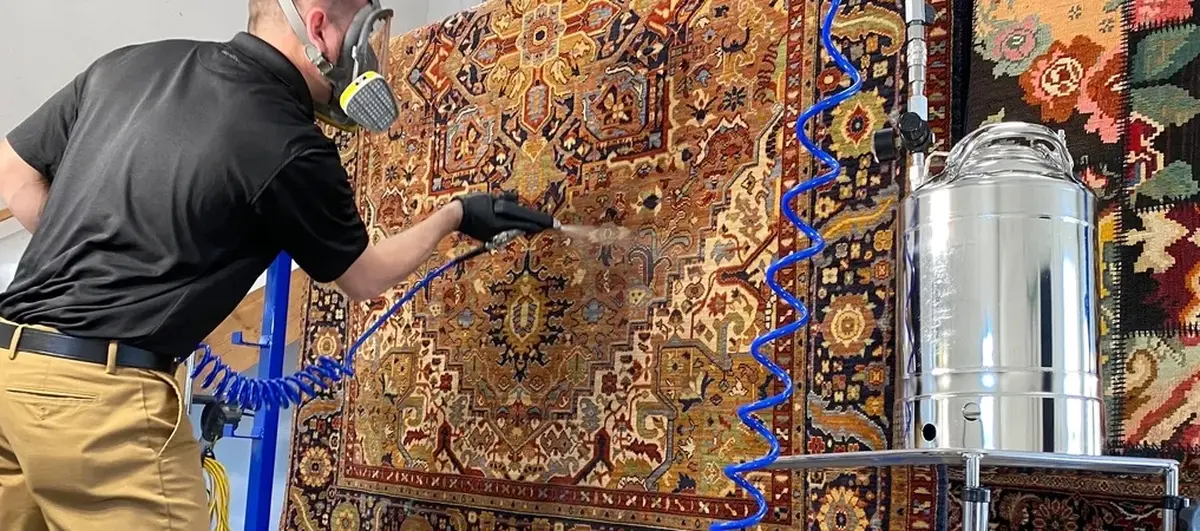
Why choose a persian rug cleaner?
Investing in professional rug care is an investment in the long-term quality and hygiene of your home. Persian rug cleaning offers a wide range of services that not only ensure a perfect clean, but also prolong the life of your rugs and improve the quality of life in your home.
It doesn’t matter whether you have a luxury Persian rug, a modern Persian rug or a delicate Persian piece in your home, a Persian rug cleaning service will tailor its methods to the specific needs of your rug and ensure that it is always in perfect condition. With professional comprehensive rug maintenance, you can be sure that your rug will not only be clean, but also safe for your family’s health.

